Life science companies enter into different types of contractual agreements, and each type has its own characteristics when it comes to revenue recognition. Our previous article, Revenue Recognition for Pharmaceutical Companies: Gross to Net and ASC 606, explained the high-level changes when it comes to the FASB standard: Revenue from Contracts with Customers (ASC 606). ASC 606 requires companies to evaluate and estimate all variable considerations regarding customer contracts consistently.
One of the critical steps of ASC 606 is determining the significant performance obligations. Performance obligations can be delivering goods (such as APIs or finished drugs) or performing services (such as research and development or consulting). Companies will have to apply significant judgments when evaluating what is a performance obligation. Common questions to ask are:
- Are the goods or services greatly connected to each other, or are they distinct from each other?
- Are the goods or services sold or performed separately?
- Could the end user/customer benefit from the good or service alone or together?
Soon after determining these performance obligations and the transaction prices comes the actual recognition of revenue.
For example, when companies are contracted to sell products, revenue recognition is relatively simple: the performance obligation is the products being sold, which will be recognized as revenue upon delivery. Similarly, if a company is contracted to sell 1,200 units of a product over the course of three months, and the customer pays an upfront fee of $30,000, the entity will typically recognize the $30,000 over the course of the three-month period as the goods are delivered. This is primarily due to delivery being seen as a separate performance obligations.
Conversely, if a company agrees to provide services, revenue recognition typically takes more time to analyze. A typical example relates to research and development services. These contractual agreements are commonly based upon milestone deliverables or phases completed and can take years to complete. Companies should determine if each milestone is distinct from each other. This plays a part in deciding if the service has one, all-encompassing performance obligation or if the service has multiple performance obligations. Depending upon the conclusion, revenue can be recognized as each milestone is complete or at the end of the R&D service contract.
For example, Company ABC provides R&D services to Customer XYZ. As part of this agreement, the two parties agree upon five milestones, which will be completed over the course of five years. If each milestone is distinct from the other, Company ABC can recognize revenue as each milestone is complete. On the other hand, if each milestone is not distinct from the other, Company ABC may have to recognize revenue after the research efforts.
Moreover, if a company is in the business of licensing agreements and/or royalty agreements, these contracts add more layers to determining revenue recognition. Regarding licensing agreements, the company can either provide a customer with rights to use or access the company’s intellectual property. When the company enters into a licensing agreement and the IP is considered functional and expected to be unchanged, revenue for the license is typically recognized when the control is transferred to the customer. However, the licensing arrangement’s revenue will be recognized over the contract life if the customer expects to update or change the IP’s functionality. When it comes to royalties, sales received in exchange for the license to use the company’s IP are recognized as revenue when the sale at the customer level occurs or when the performance obligation has been satisfied.
For all the differing agreements that a company may see in their normal course of business, one can only imagine that ASC 606 will generate a bit more deferred revenue than previously seen. This brings up the company’s tax filing. The Tax Cuts and Jobs Act (TCJA) amended Section 451, which contains the general rules for the timing of revenue recognition for accrual basis taxpayers. Sec. 451(b), in particular, states that in most cases if a taxpayer has an applicable financial statement (AFS), income must be recognized at the earlier date of when the all events test is met or when the income is taken into revenue in its AFS. As defined in Sec. 451(b)(1)(C), the all events test is met with respect to any item of gross income if all the events have occurred which fix the right to receive such income and the amount of such income can be determined with reasonable accuracy. Therefore, on an accrual basis, taxpayers will need to pay attention to the all-events test, as the test can be met prior to recognizing the same revenue in its financial statements.
If you have any questions related to any life science, pharmaceutical, or tax matter, please contact your WilkinGuttenplan advisor.





